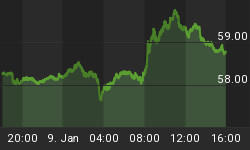If ever there have been federal tax cuts tailored to produce supply-side economic behavior, they were implemented during President George W. Bush's administration starting in 2001. Marginal tax rates on wage/salary income as well as the tax rates on capital income (capital gains and dividend income) both were reduced. In fact, according to data from the Tax Policy Center, the marginal effective tax rates on capital income are the lowest (23%) of any year starting with 1953 (see www.taxpolicycenter.org). According to supply-side economic theory, cuts in marginal tax rates on wage/salary and capital income should lead to increased saving and investment. The data suggest that any extraordinary investment that has occurred in the wake of the George W. Bush tax cuts has been in residential real estate and consumer durable goods.
Before discussing saving and investment in this economic expansion, which began at the end of 2001, it is interesting to note that despite large tax cuts, real Gross Domestic Product (GDP) growth has been the slowest of any expansion starting with 1961's. The current expansion just nudges out for last place the expansion that began in 1991; two years before President Clinton was inaugurated (see Chart 1). As you may recall, during the expansion that began in 1991, Presidents George Herbert Walker Bush and Clinton both raised taxes.
Chart 1
Again, according to supply-side economic theory, cuts in marginal tax rates are supposed to lead to increases in business investment and private sector saving, ceteris paribus. Thus, after marginal tax rate cuts, especially to the tax rates on capital income, we would expect increases in business fixed investment expenditures relative to household-related "investment" expenditures (i.e., expenditures on consumer durable goods and residential investment). That's the theory. The facts are shown in Chart 2.
Chart 2
Hmm. Interestingly enough, it was the expansion starting in 1961, when President Kennedy was inaugurated, that exhibits the strongest supply-side results. And President Kennedy did initiate supply-side tax cuts by reducing marginal tax rates on wage/salary income and implementing an investment tax credit for business capital equipment. The investment tax credit likely played the largest role in boosting business fixed investment spending relative to household-related investment spending.
During President Reagan's administration, the reference to supply-side economics became popular. And President Reagan did slash marginal income tax rates. Despite this, 15 quarters after the 1982 expansion began the ratio of business investment to household-related investment was dead last, by a wide margin, compared with other economic expansions.
The behavior of the ratio of business investment to household-related investment in the current expansion ranks in the middle of the pack, but is lower than that of the 1991 expansion, the one most congruent to President Clinton's term of office. During the Clinton administration, marginal tax rates were increased, especially on upper-income households - the very households the tax increases were most likely to dissuade from saving and providing funds to corporations for capital investment. So, despite similar real GDP growth in the George W. Bush and Clinton economic expansions, the larger supply-side effects occurred during the Clinton expansion.
What about private saving - both household and business? Have recent supply-side tax cuts stimulated it? Sadly, this appears to be another case of ugly facts discrediting a beautiful theory. Chart 3 shows that the private net saving rate has been plumbing post-WWII lows in recent years. The saving rate did rise to a post-WWII high of 11.3% in 1984 after the Reagan tax cuts, but has drifted downhill since then in the face of marginal tax increases as well as cuts.
Chart 3
How might the op-ed editors of The Wall Street Journal explain the failure of the Bush administration's tax cuts to engender supply-side results? Their typical response concerns expectations. Conveniently, there always seem to be "bad guys" threatening to raise taxes in the future, which discourages saving and investment in the present. Maybe The Journal is on to something here. Perhaps households and businesses know that with the impending wave of Baby Boom retirees, the federal budget deficit will soon balloon, requiring some "bad guy or gal" to reverse the Bush tax cuts.
*Paul Kasriel is the recipient of the 2006 Lawrence R. Klein Award for Blue Chip Forecasting Accuracy















